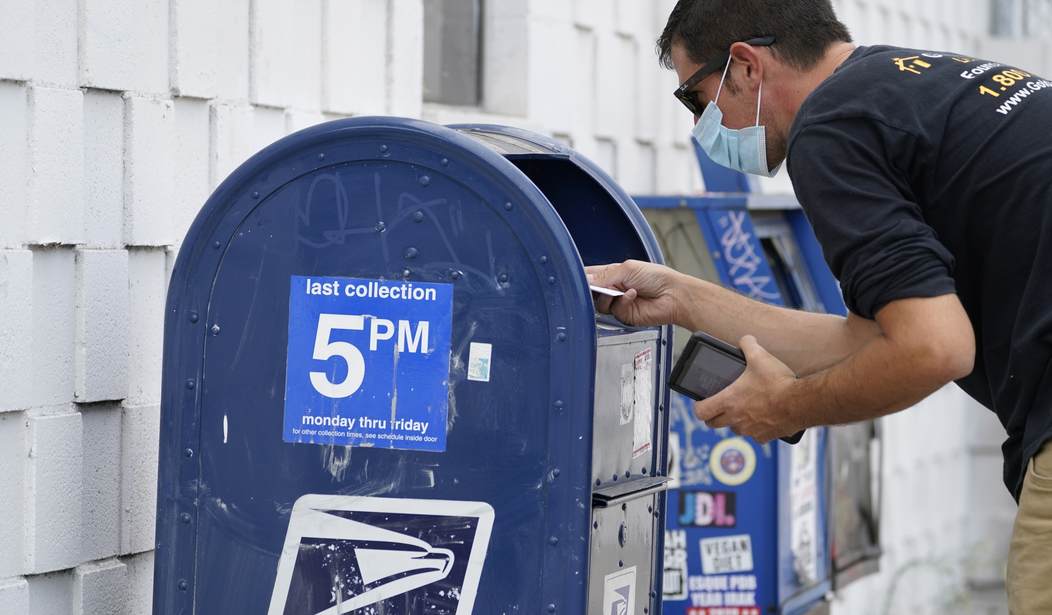Postmaster General Louis DeJoy has entered the spotlight once again following a lawsuit filed earlier this month by 20 state attorneys general, who are aiming to stop his 10-year plan to reorganize the U.S. Postal Service.
It is fair to conclude these 20 attorneys general, all Democrats, are going after him in part because he was appointed by President Trump. But it’s also fair to say that DeJoy’s plan appears to exacerbate many of the problems it was supposed to address.
The Postal Service has two lines of products, basically – one that is monopoly protected and one that sells what it calls competitive products. Under the first umbrella is first-class mail and the right to put things in a US mailbox. Under the second comes its growing package delivery business.
The Postal Service loses $9 billion per year, and it can’t seem to turn this around because it refuses to honestly assess the costs of providing its competitive products. Packages generate nearly 40 percent of revenues for the Postal Service, but they are required to bear only 8.8 percent of institutional costs.
Moreover, the Postal Service pays no property taxes on its facilities and has access to loans no other vendor can receive. Congress approved $10 billion in financing this year, then canceled the Postal Service’s repayment requirement.
A new study shows the Postal Service has sold its competitive services – package delivery mainly – for less than what the services cost. So basically, our mail costs more and comes later so the Postal Service can afford to undersell FedEx and UPS and build its package business. According to the study, to ship a 2-pound overnight box from New York to Miami would cost $106.94 for FedEx and $114.74 for UPS but just $46.20 for the Postal Service.
Recommended
The surprise then is not that its market share has climbed from 1.75 percent in 2010 to 15.6 percent in 2020, it’s that it hasn’t climbed more.
It’s certainly not productivity that allows the Postal Service to charge so much less than its competitors. The Postal Service’s annual productivity gains have averaged just a sixth of those of its commercial competitors over the last 30 years, labor costs have climbed at almost twice the rate of commercial competitors, and Postal Service on-time delivery rates have plummeted from 92 percent in 2019 to 73 percent in the first quarter of this year, even as mail volume has gone down another 14 percent.
The pandemic did not much affect mail service quality – there are no rises and dips that correspond with rising and falling caseloads. And the biggest decline in delivery times came after the 2020 election, meaning mail-in balloting can’t be blamed for the declines.
What has changed and brought deteriorating service is the increased emphasis on package delivery. Mail volume went down 10.7 percent in 2020 as Americans increasingly paid their bills online and sent fewer letters or Christmas cards. Package delivery went up 18.8 percent in 2020 – the Christmas rush essentially began in March when Americans found themselves with time on their hands to shop online and still has not abated.
Now, the Postal Service has decided to double down on this. It is purchasing a line of new trucks to accommodate its increasing foray into the package delivery business. It is retrenching on delivery times, adding a half-day to a full day of extra time for what it considers on-time delivery. It has raised rates twice already this year and has hinted more rate increases may be in store.
It’s not known how the new revenue will be spent, but it’s unlikely it will go to improve service. The Postal Service raised rates five times from 2011 to 2020 for a total increase from 44 cents to 55 cents for letters. But during that time, on-time performance suffered even as volume declined.
Resources were directed to enhanced package delivery because this has become the Postal Service’s priority. The question is: Given we have ample package delivery companies in the country and only one entity that can deliver first-class mail to all 155 million addresses in the US, should the Postal Service not focus on doing what we need it to do – efficiently, cost effectively – instead of the business it wants to be in?
If DeJoy wants to survive the onslaught of opposition that threatens his every move, that would be the question to get right.
























Join the conversation as a VIP Member